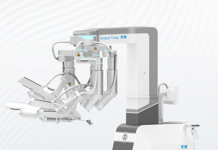The Wound Company connects providers with wound care specialists to treat patients with chronic wounds in a market currently worth $30bn.
The Wound Company has launched from stealth with $4.25m in backing from Susa Ventures and Sozo Ventures.
The funding will help the company in its aim to fix what it calls a broken industry of wound and ostomy care.
The US-based start-up uses predictive analytics and multi-channel communications in its platform that connects patients and providers with wound and ostomy specialists. Appointments can be conducted virtually or in person.
The telemedicine technology aims to allow patients with chronic wounds access treatments from a range of settings, including at home, hospitals, or long-term care facilities.
The company has developed algorithms to assess individual patients’ risk levels and predict wound healing outcomes. By offering patient and population-level clinical reporting and integrating patient data, the platform should be able to streamline care for chronic wounds – a condition that affects around 2% of the US population.
RELATED: CorWave secures €61m in second round of Series C funding
GlobalData estimates the global wound care management market is worth $30bn, with it forecast to reach $38.8bn by 2030.
In the US’ Medicare population alone, wound care is estimated to cost $28.1bn annually in the country. The Wound Company said it has already partnered with a range of health providers and health systems. It says that, based on results acquired while in stealth, the platform could lead to a potential 15%-20% in wound care costs.
The company is also offering patients a wound care app that provides information about how to care for wounds, along with remote monitoring features.
The Wound Company’s founder and CEO Nima Ahmadi said: “The wound and ostomy care industry is broken. It’s operating in the fee-for-service world, which pushes expensive procedures and products that help the bottom line, but don’t impact outcomes for the patient. We’re paid to heal wounds with continuous care and, in doing so, save money for health plans and at-risk providers.”






